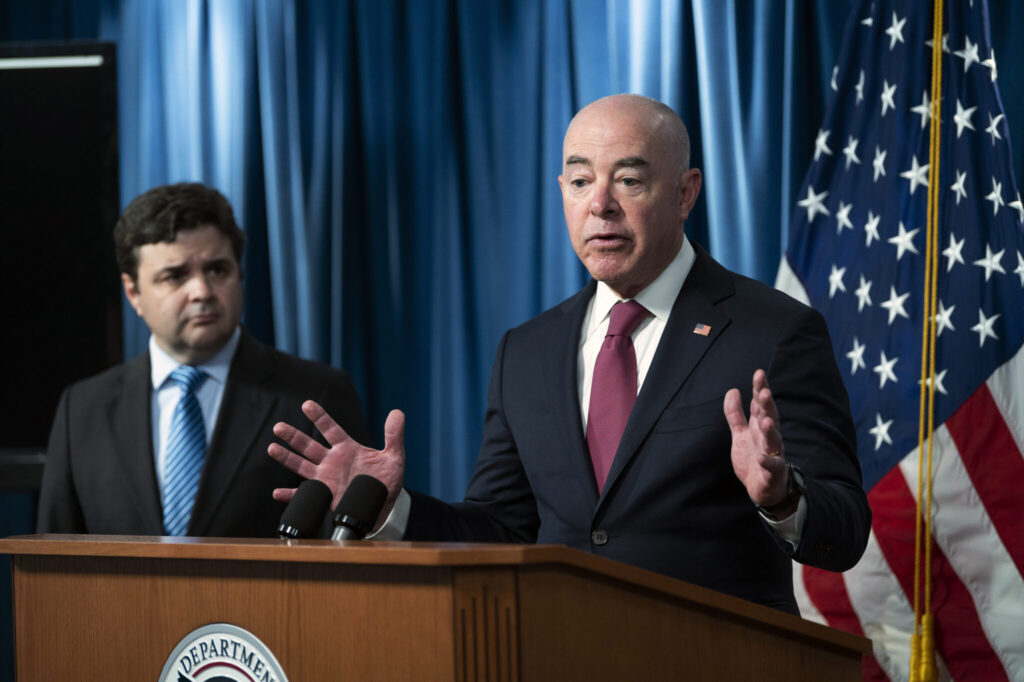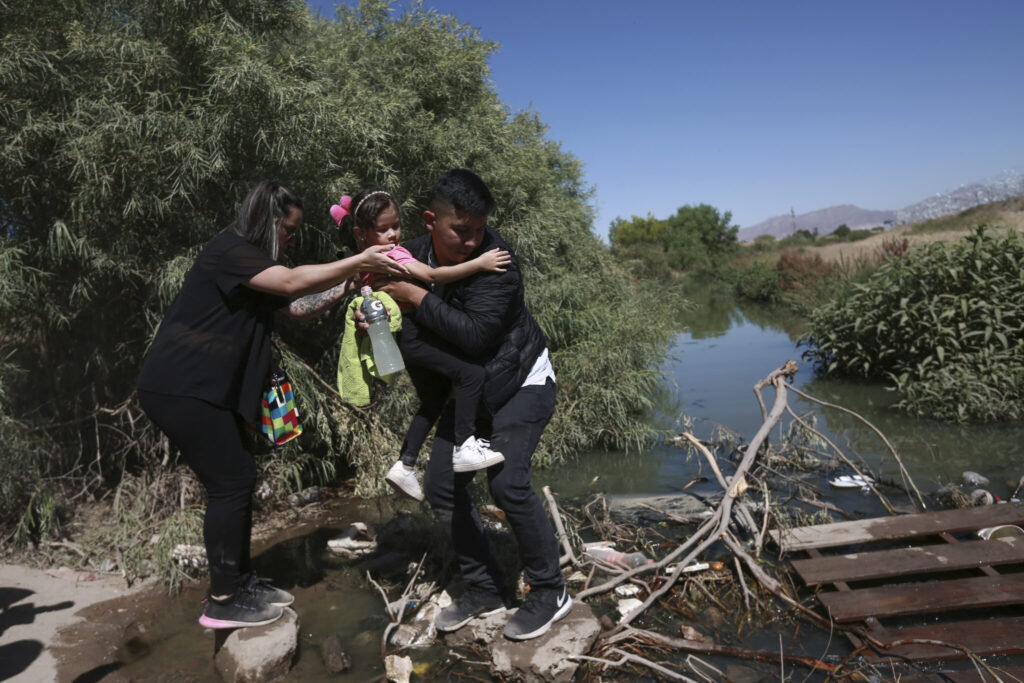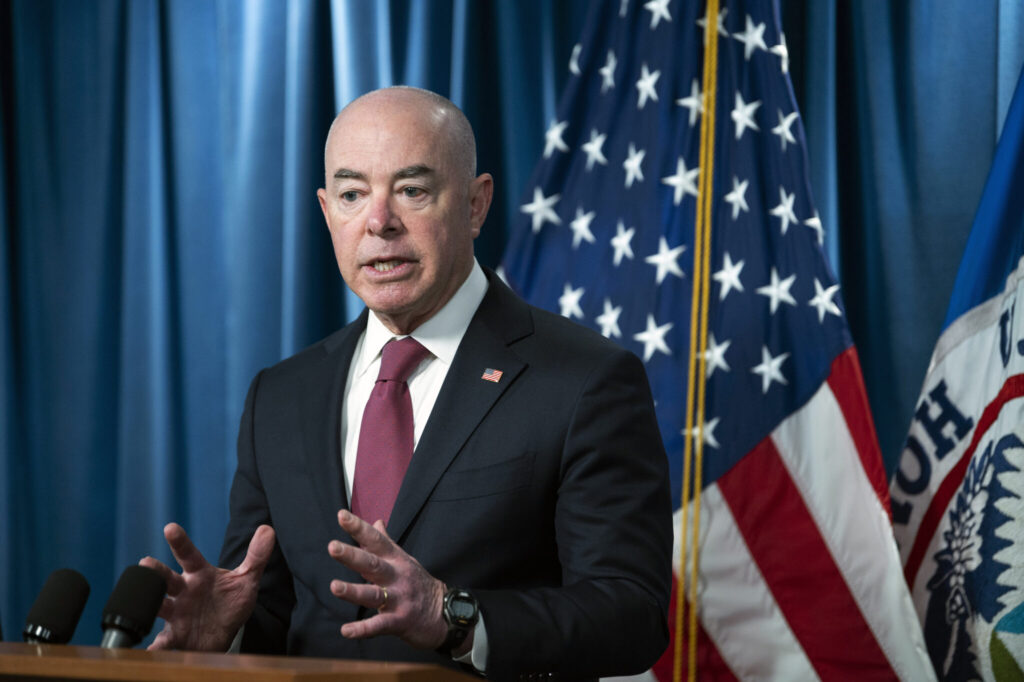President Joe Biden’s administration on Thursday will begin denying asylum to migrants who show up at the U.S.-Mexico border without first applying online or seeking protection in a country they passed through. It’s part of new measures meant to crack down on illegal border crossings while creating new legal pathways, including a plan to open 100 regional migration hubs across the Western Hemisphere, administration officials said. The Associated Press has the story:
US to limit asylum at Mexico border, open hubs
Newslooks- CIUDAD JUAREZ, Mexico (AP)
President Joe Biden’s administration on Thursday will begin denying asylum to migrants who show up at the U.S.-Mexico border without first applying online or seeking protection in a country they passed through, according to a new rule released Wednesday, as U.S. officials warned of difficult days ahead as a key limit on immigration is set to expire.
The rule comes just a day before the U.S. ends use of Title 42, which had allowed it to limit migration in the name of preventing the spread of COVID-19. The change has led to concerns about whether the U.S. has the necessary tools to control migration.
The rule announced Wednesday is part of new measures meant to crack down on illegal border crossings while creating new legal pathways, including a plan to open 100 regional migration hubs across the Western Hemisphere, administration officials said. U.S. officials have detailed steps they’ve taken to prepare for what many are expecting to be a substantial increase in migrants attempting to enter the U.S.

Homeland Security Secretary Alejandro Mayorkas warned that the days and weeks ahead have the “potential to be very difficult.”
“Our plan will deliver results but it will take time for those results to be fully realized,” he said.
In Ciudad Juarez, migrants continued to arrive this week in small groups by train or bus — and leave daily to surrender to the U.S. authorities. Fran Tovar, a 30-year-old electrician from Venezuela who left two children behind to try to reach the U.S., was crossing on Wednesday.

“There is fear and anguish,” said Tovar, adding that he has spent three months in Juarez trying to get an appointment through an app the U.S. has encouraged migrants to use to present themselves at a border entry point and seek admission.
Tovar was expelled from the U.S. on his first attempt, then tried again 24 hours later. He was worried because after Title 42’s use expires, he could face tough consequences.
The COVID-19 pandemic-related restrictions have allowed border officials to quickly return people — and they did so 2.8 million times since March 2020. But after the restrictions expire Thursday, migrants caught crossing illegally will not be allowed to return for five years. They can face criminal prosecution if they do.
Even with the restrictions in effect, border crossings rose to all-time highs.

The measure announced Wednesday is a key part of the U.S. strategy. While stopping short of a total ban, it imposes severe limitations on asylum for those crossing illegally who didn’t first seek a legal pathway. It includes room for exceptions and does not apply to children traveling alone. It was first announced in February and takes effect Thursday.
It’s almost certain to face legal challenges. A federal appeals court prevented similar but stricter measures pursued by then-President Donald Trump in 2019 from taking effect.
The Biden administration emphasized the complex dynamics at play when it comes to immigration that at one time consisted largely of adults from Mexico seeking to come to the U.S. They could easily be returned home. Now migrants come from across the Western Hemisphere and beyond.
The rule was immediately met with criticism.

“With its new rule formalizing sweeping restrictions on asylum access, the Biden administration is putting border politics ahead of the safety of refugees,” said Jeremy Konyndyk, the president of Refugees International.
U.S. officials also said they planned to open regional hubs around the hemisphere, where migrants could apply to go to the U.S., Canada or Spain. Two hubs were previously announced in Guatemala and Colombia. It’s unclear where the other locations would be. The administration officials spoke on the condition of anonymity to discuss ongoing border plans that were not yet public.
The measures are meant to fundamentally alter how migrants go to the U.S. southern border as officials brace for large numbers to cross this week, possibly to circumvent the new rules. Others were waiting until after Title 42 goes away, thinking their chances might be better.

Roughly 24,000 law enforcement officers were stationed along the 1,951-mile (3,140-kilometer) border with Mexico. An additional 1,500 active-duty military troops are being sent to back up U.S. Customs and Border Protection but will not interact with migrants. And 2,500 National Guard troops are already there, tasked to help out CBP.
The Democratic administration will return migrants from Haiti, Venezuela, Cuba and Nicaragua to Mexico if they do not apply online, have a sponsor and pass a background check. It will admit 30,000 per month from those nations to the U.S. Mexico will continue to take back the same number who cross illegally.
Immigration officials also plan to deploy as many as 1,000 asylum officers to conduct expedited screenings for asylum seekers to more quickly determine whether someone meets the standard to stay in the U.S.

Mayorkas said migrants taken into U.S. custody will be given an initial option to turn back because of the increased consequences of removal after Title 42 expires.
Most of the people going to the U.S.-Mexico border illegally are fleeing persecution or poverty in their home countries. They ask for asylum and have generally been allowed into the U.S. to wait out their cases. That process can take years under a badly strained immigration court system, and it has prompted increasing numbers to go to the border hoping to get into the U.S.
Authorities have spent months setting up interview rooms and phone lines at facilities along the border to facilitate screenings, part of a broad effort to expand the use of expedited removal proceedings aimed at migrants who cross illegally into the U.S.







